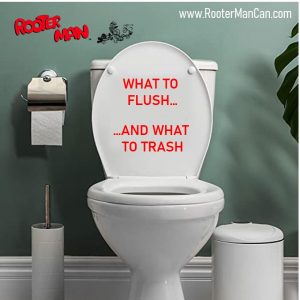 There are few things worse than a clogged toilet. It’s inconvenient, it’s messy, it can be expensive to fix, and it’s gross.
There are few things worse than a clogged toilet. It’s inconvenient, it’s messy, it can be expensive to fix, and it’s gross.
The good news? It’s also completely avoidable.
These tips will help you avoid clogged toilets and the frustration that comes with them.
Know What to Flush
The reason toilets clog is because things end up in them that shouldn’t. The only things that should ever be flushed are human waste and toilet tissue. Anything else and you’re likely to end up with a clog.
And don’t assume that if something doesn’t cause a backup immediately there won’t be a problem. There are plenty of times when flushing an inappropriate item leads to a clog a few weeks or months in the future.
What are some of the most common culprits for flushing-related clogs?
• Napkins and paper towels
• Sanitary products
• Floss
• Hair
• Facial tissues
• Wipes
• Coffee grounds and other food
• Medication
• Diapers
Unfortunately, some of these products are labeled “flushable” or safe for toilets. The only way to really know is to compare how they react when left in water. If they disintegrate like toilet paper, flushing should be safe. But if you’re unsure of what’s going to happen, you’re better off disposing of the item in your garbage can.
Getting Your Flush Right
Even items that are safe for toilets can sometimes cause clogs. Everyone has heard stories, or experienced themselves, of an overzealous toilet trainer who uses and flushes an entire roll of toilet paper.
Unfortunately, it’s not only little ones that overdo it with toilet paper. To avoid clogs, only use the proper amount and never flush large wads of toilet paper.
Keep the Area Free of Risks
Sometimes clogs happen by accident because items fall into the toilet. To reduce the risk for clogging, keep the area free from items that fit into the toilet.
This means you might want to move that shelf or storage container you have over the toilet. And keep the lid closed when the toilet is not in use.
Is Your Drain Slow?
Sometimes you can tell a clog is on its way, but there’s time to act before you’re dealing with an overflowing toilet.
Slow or weak flushing can be a sign of a clog. You should plunge as soon as you notice a problem, and definitely before people use the bathroom and add to the problem.
Also invest in a toilet plunger with a neck-like end that fits into the drain hole and forms an airtight seal.
If you’d like more tips for preventing toilet clogs or you have a clog you need help fixing, give us a call!


